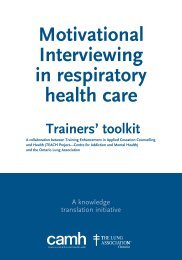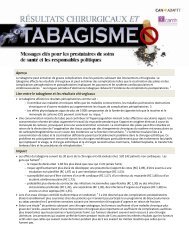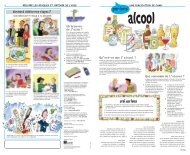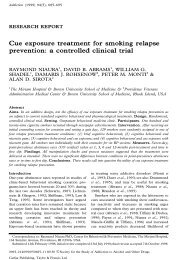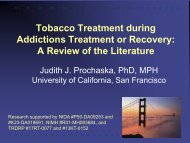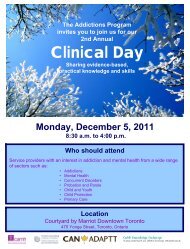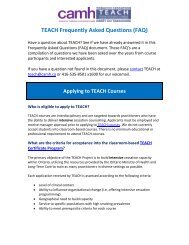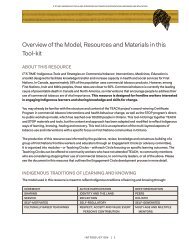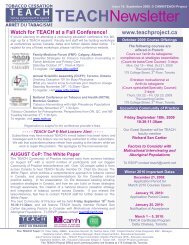SOADI Frontline Training - CAMH - Nicotine Dependence Clinic
SOADI Frontline Training - CAMH - Nicotine Dependence Clinic
SOADI Frontline Training - CAMH - Nicotine Dependence Clinic
Create successful ePaper yourself
Turn your PDF publications into a flip-book with our unique Google optimized e-Paper software.
<strong>SOADI</strong> FRONTLINE TRAINING 5<br />
What is Diabetes?<br />
Objectives<br />
By the end of this training session, participants will:<br />
• Understand how diabetes affects our bodies, minds, spirits, and<br />
emotions.<br />
• Understand how diabetes affects First Nations, Inuit, and Métis<br />
communities.<br />
Diabetes prevalence is three to<br />
five times higher among<br />
Aboriginal people than among<br />
the general Canadian population.<br />
Health Canada 2009<br />
Background<br />
When we eat, our bodies break down food into a sugar called<br />
glucose. This sugar is our main source of fuel and travels to all<br />
parts of our bodies through the blood.<br />
Insulin, a hormone produced by the pancreas, helps the sugar<br />
enter into our cells. Some sugar is left in our blood as a back-up<br />
supply. This sugar is referred to as our blood sugar and the amount<br />
can be measured by a simple test.<br />
Figure 1 The pancreas is the<br />
body’s insulin-production centre.<br />
High blood sugar can result in one of two circumstances:<br />
1. When our pancreases cannot produce enough insulin.<br />
2. When our bodies do not use insulin properly.<br />
If the body’s cells do not use enough sugar and too much is left in<br />
the blood, the result is a chronic disease called diabetes mellitus<br />
(or just diabetes).<br />
Diagnosis<br />
Diabetes is diagnosed by blood tests designed to check your bloodglucose<br />
level. These tests fall into one of three categories:<br />
• FBS—a fasting blood glucose.<br />
• RBS—a random blood glucose.<br />
• OGTT—an oral glucose tolerance test.<br />
Figure 2 The blue circle has<br />
been the universal symbol for<br />
diabetes since 2006.




